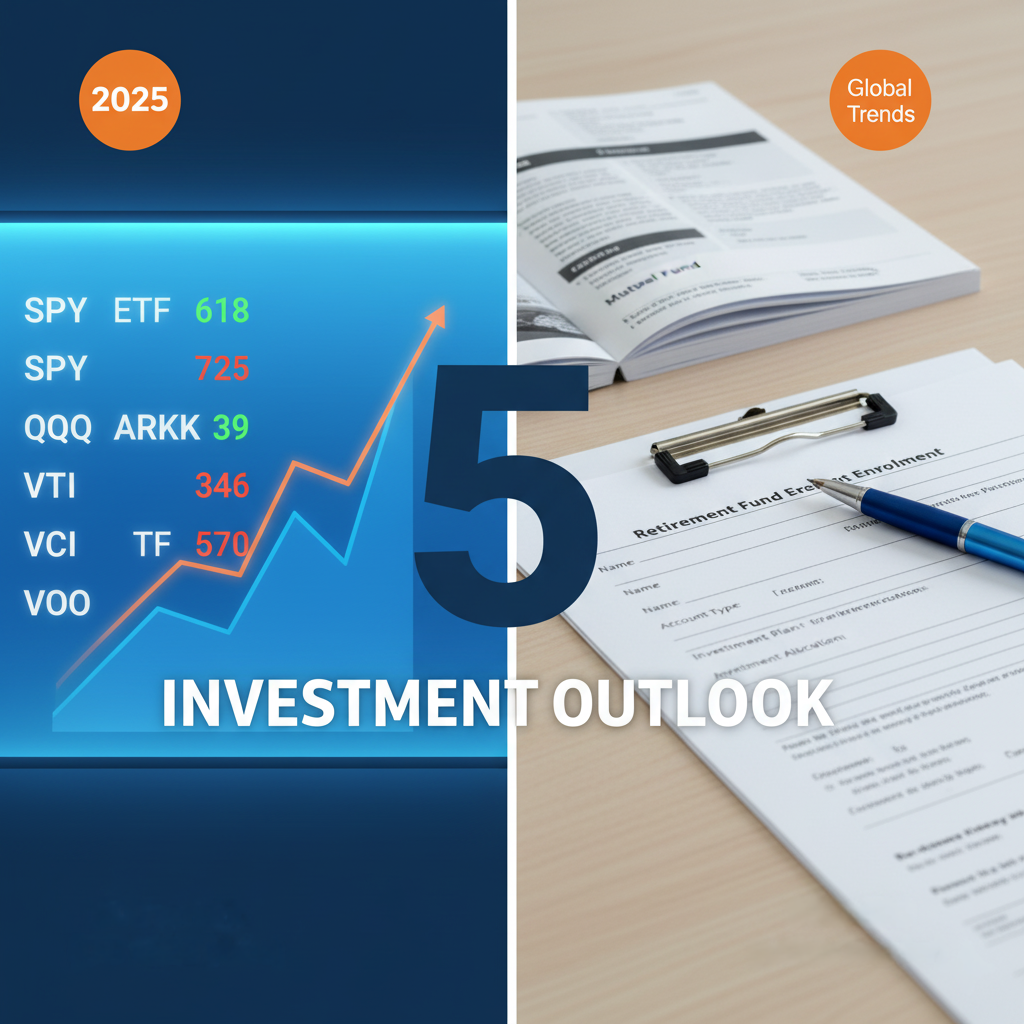5 Reasons ETFs Are Winning Over Mutual Funds in 2025 – What Every Investor Should Know

Table of Contents
Intro – quick take
Five years from now, the debate between ETFs and mutual funds is much more pragmatic than philosophical. Both are diversifying vehicles that help investors diversify, but ETFs have merged the characteristics of funds and stocks, and investors are paying attention. Below are the top five reasons for the adoption of ETFs around the globe, supported by some new industry data and provider analysis.
Reason 1 – Dramatic inflows and product growth (momentum matters)
ETFs have seen record inflows and a huge upsurge in the number of new launches in the last few months to signal a clear momentum from investors.
Industry trackers saw record net inflows year-to-date, with a plethora of new ETF products hitting the market early this year, including a spike in actively managed ETFs. These flows have proven that a majority of ETF wrappers have been able to capture the demand from retail and institutional investors. For example, ETFGI says, actively managed ETF assets reached new records, and net inflows for the industry were very strong through mid-2025.
Why it’s important. More providers are drawn to momentum – That improves liquidity for popular products, and creates a good cycle of adoption.

Reason 2 – Lower visible costs and improved fee competition
ETFs put competitive pressures on fees across the industry. Passive ETFs continue at ultra-low expense ratios as the bigger providers attempt to secure flows, and active managers have followed suit by offering ETFs at competitive fees.
Although ETFs make pricing comparisons easy (just add the headline expense ratio to the bid-ask spread), some mutual funds (no-load index funds in particular) can be very low-cost. Brokerages now offer commission-free ETF trading, and some ETFs from the biggest promoters (iShares, Vanguard, State Street) have very low expense ratios, making the effective cost of their products even lower for retail investors. This fee transparency and competition have improved ETF uptake.
Reason 3 – Intraday trading, liquidity, and execution flexibility
ETFs are similar to stocks in that they are traded on an exchange throughout the trading day. The intraday trade facility provides the facility for limit orders, stop orders, and precision execution – features which are not available in the mutual funds, which price only at the end of the day at NAV.
This difference is important for tactical investors, active traders, and anyone who is looking to react to intraday news events. ETFs are also being used for portfolio management for quick exposure adjustments, which has boosted the ETF volumes and market-making capacity. Provider collateral documents and institutional prospectuses encourage trading flexibility as an ETF advantage.
Reason 4 – Tax efficiency, especially in taxable accounts
The creating/redemption process most ETFs utilize (in-kind) is different than a mutual fund in that it typically doesn’t generate the same amount of capital gains distributions as a similar investment managed mutual fund.
That tax advantage on structure is often more beneficial for those investors in taxable accounts. Industry commentaries and provider Education pages emphasize in-kind flows of ETFs, meaning lower forced selling within the fund and therefore fewer taxable trading events compared to many mutual funds. Tax efficiency has therefore become an important marketing and investor education message for ETFs, particularly in those markets where capital gains treatment is a consideration for investors.

Reason 5 – Product innovation: active ETFs, fixed income ETFs, and global reach
No longer is the ETF product set mainly passive equity trackers. Asset managers launched record numbers of ETFs across all categories: active equity ETFs, bond ETFs, commodity wrappers, and niche strategies.
This product innovation allows access for investors to strategies that were once only available in mutual fund form, but in an ETF format, which allows investors to trade in the ETF, see what’s in the portfolio, and usually has more favorable tax treatment. The upshot: complex exposures, or manager-driven exposures, are achievable with ETFs, and open the use case for an advisor or institution far beyond simply following an index. Data from LSEG and ETFGI both show record new ETF launches and strong inflows into a wide variety of ETF categories.
What this means for different investors
- Retail DIY investors: ETFs offer fast and cost-effective one-click trading, which makes it easy for retail DIY investors to build diversified portfolios without paying money to a portfolio manager.
- Advisors & planners: This is why ETFs are not eliminating mutual funds in the stock market. This is why ETFs aren’t eliminating mutual funds in the stock market, especially for automated contribution plans, as well as for some retirement platforms.
- Institutions: ETFs are ideal for short-term exposure and efficient building blocks for large portfolios, reflected in the growing institutional volumes.
Counterpoints – why mutual funds still matter
Mutual funds are still key players, though – they are integral to most employer pension plans, they are an effective way for everyday investors to do automatic investing (without having to trade), and there are mutual funds that provide share classes or strategies that ETFs don’t yet do.
In addition, there are active mutual fund strategies with an illiquid holding base that are harder to accommodate in an ETF structure. So the growth of ETFs is huge, but not a complete replacement for mutual funds.
Actionable checklist for investors
- Compare total cost – Expenses ratio + expected spreads + trading/commission fees
- Tax status – ETFs are even more tax-efficient than index funds, so for that reason, ETFs may be the choice of large taxable accounts. S
- Assess trading requirements – as intraday control is important, ETFs are better.
- ETF alternatives – check for alternative strategies you wish to invest in ETFs and find out if a passive ETF is available for you (active ETF, bond ETF).
- Liquidity – Liquidity should be checked for niche ETFs in terms of average daily volume and bid-ask spreads.







1 thought on “5 Reasons ETFs Are Winning Over Mutual Funds in 2025 – What Every Investor Should Know”